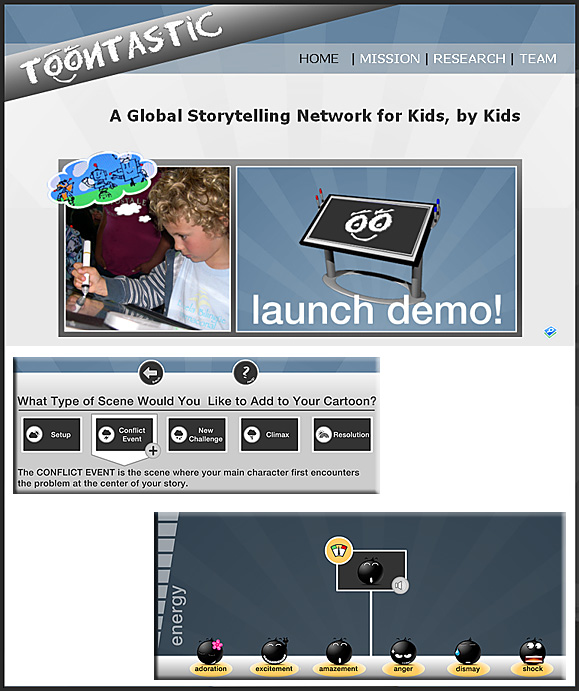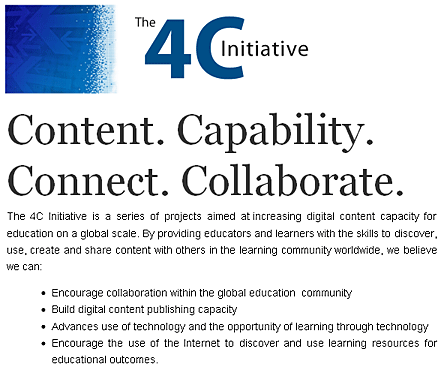ToonTastic is a storytelling and animation tool that empowers 5-10 year-old children to create their own cartoons and share stories with other kids around the world. Using a multitouch screen, kids can draw characters, objects, and settings and then animate their creations through simple gestures and real-time audio recording. The system is designed to not only scaffold the storytelling process, but to seamlessly capture the visual and narrative nature of play – thereby enabling even the youngest computer users to share ideas, art, and stories with friends and family worldwide on our “Global Storytelling Network – for Kids, by Kids”.
The 4C Initiative is a series of projects aimed at increasing digital content capacity for education on a global scale.
Content. Capability. Connect. Collaborate.
Global Education: Using Technology to Bring the World to Your Students — by Dr. Laurence Peters
and
http://www.isteconnects.org/2010/01/25/using-technology-to-learn-and-to-connect/
Eleventh grade students in Bangladesh exchange video interviews with 10th-grade students in Georgia. High schoolers in Illinois learn Japanese, Hebrew, Latin, Spanish, French, and German using online discussions with counterparts from many different countries. Students from around the world research endangered animal species from their areas and publish their findings to a shared website. Connecting globally through advances in Internet technology, including Web 2.0 tools, can now be a reality for any student in any classroom.
As our local communities reflect more of the world’s diversity, students need to be prepared to communicate with and relate to individuals from different countries and cultures. Integrating global education into standards-based lessons allows students to connect personally with their peers across geographical boundaries, expand their knowledge and awareness of the world, and increase their interest and curiosity in what they are learning. Global Education is a guide to get you started. It provides an introduction to global networks such as iEarn, Global Schoolhouse, and ePals; an overview of Web 2.0 tools that support global learning, such as wikis, blogs, and podcasts; and hundreds of Web resources. No matter the grade level or subject area, Global Education’s numerous examples, case studies, and lesson plans will provide you with ideas and inspiration for bringing your students the world.
Features:
- A sampling of global education projects from around the world
- A glossary and lists of hundreds of global education resources
- Historical perspectives on global education










